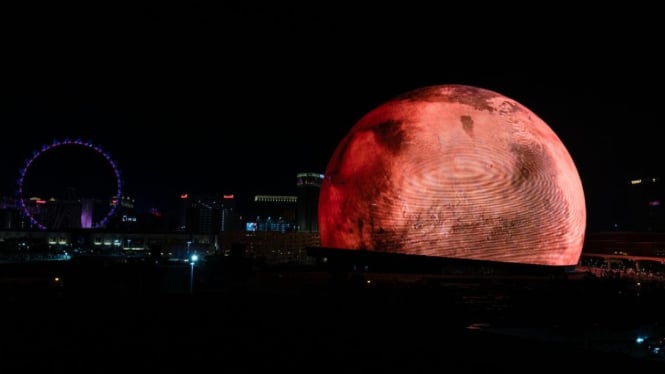Tuesday, December 5 2023 – 17:35 WIB
VIVA Digital – All planets in our solar system consist of two forms, namely rocky and gas. But all the moons in our solar system are rocky, even those orbiting the gas giant Jupiter.
So, why isn’t there a moon made of gas?
Quoting the Space report, Tuesday, December 5 2023, there are 2 reasonable reasons why there are no gaseous moons.
Outside the solar system, there are more than 5,500 exoplanets that have been discovered, but only 2 possible exomoons (moons outside the solar system) have been seen, although this has not been 100 percent confirmed.
What’s interesting about these two exomoons is that both are said to have the form of gas giants, orbiting gas giants that are much larger in size.
Before finding out why the moon was not created in the form of gas, it seems it would be better if we discuss how gas planets are formed. There are two known scenarios for the formation of gas planets, namely bottom-up formation and the other top-down
Bottom-up formation of gas planets
This bottom-up scenario is the process of forming giant gas planets in our solar system. Scientists believe that 4.5 billion years ago the sun was still surrounded by a disk of gas and dust.
It is the protoplanetary disk from which all the planets formed. First, they accumulate as rocky objects, continuing to grow as they collect dust, gravel, and asteroids.
Illustration of Earth and Moon.
Some only grow as big as Mars or Venus, but others continue to grow, forming giant rock bodies with masses up to 10 times the mass of Jupiter.
Once it grows to that size, this gas planet has strong gravity to pull gas from the protoplanetary disk.
How much gas is collected depends on the gravity and how much gas is available around it.
Top-down planet formation
The top-down scenario forms directly from collapsing clumps of gas in nebulae, interstellar clouds consisting of dust, gas and plasma.
However, there is a minimum amount of mass that can be produced by a top-down shaping process. When a large clump of gas contracts under its own gravitational force, it heats up as the gas is squeezed into a smaller, denser volume.
Photo illustration of an asteroid hitting the moon
when gas is hot, it floats so that in order to continue contracting, the lump of gas must give off excess heat. As a result, astronomers often see collapsing gas clouds glowing in the light of thermal infrared energy.
However, there is a limiting factor called the opacity limit for fragmentation. Sam Pearson of the European Space Agency (ESA) said the process would emit enough heat that the gas could cool and still collapse depending on the opacity of the dust, as well as its temperature and density.
The smaller the volume, the more dense and opaque the dust becomes, and the process of releasing excess heat due to gravitational contraction becomes more inefficient. So, no objects smaller than 3 times the mass of Jupiter could have formed in a top-down process.
The answer to why the solar system has no gas moons.
Most moons in the solar system formed through a bottom-up process of core accretion. This occurs in a disk of residual material surrounding the parent planet.
because the parent planet has absorbed most of the available material, the remaining material is not enough to form a massive moon, because the moon does not have strong gravity to attract a lot of gas.
Illustration of a Total Lunar Eclipse
2023-12-05 10:35:01
#Scientists #answer #moon #formed #gas


